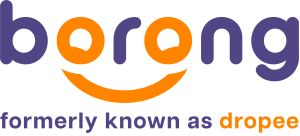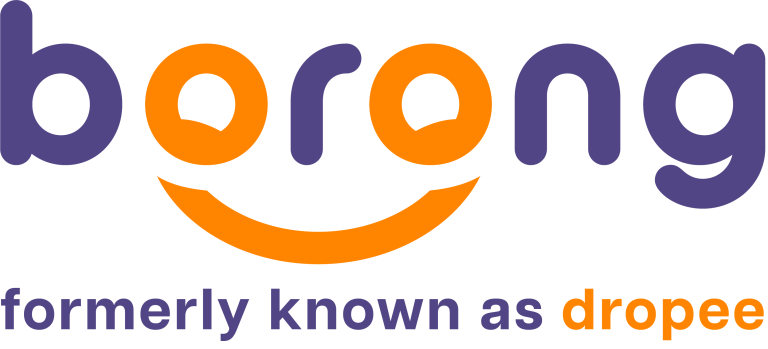Once an industry that operated mainly offline, B2B e-commerce has been growing at a steady rate. B2B e-commerce currently accounts for 24% of all business sales and is estimated to reach $3 trillion by 2027.
The digital shift in B2B did not come out of nowhere. With the rise of online shopping, buyers grew accustomed to the seamless shopping experience in their personal lives. This means that buyers are now looking for the same experience in business purchases and expect self-service tools from sellers.
Digitalisation did not slow down post Covid-19 and while navigating a new landscape is daunting, it is an opportunity for B2B sellers to revitalise their business strategy. As businesses evolve, revising your strategy to align with industry shifts is the key to success.
B2B sellers are including digital goals as part of their existing business plans and you should too. Here are the 5 best practices for B2B e-commerce success.

5 Steps to B2B E-Commerce Success
#1 Enhance Your Online Catalogue
The majority of us will utilise web searches to get information and resolve issues, which means buyers will hit up search engines first too. This is where a good SEO (search engine optimisation) strategy can come in handy, to ensure that your online store is among the first websites recommended when buyers google something.
Ranking high on search engine result pages takes time and thorough research to understand what your target customers want. Doing it yourself means a lot of trial and error but you can also take a shortcut by joining an online marketplace. Established online marketplaces like Dropee have been optimised so that buyers who are looking for products we offer will find us easily.
The next thing to do to enhance your product catalogue is to offer rich product content. B2B purchases are often large and naturally, when a purchase is costly, buyers will be deliberating the decision more carefully. Providing customers with enough information in your catalogue is crucial to convince them.
Simplifying the navigation will also encourage purchases. Buyers will leave your site fast if the navigation is confusing. Therefore, it’s crucial to have clear product categories, attributes and filters in place so buyers can find products as quickly as possible. Search functions like auto-completion and similar product options speed up the process and help your buyers find what they are looking for.
#2 Optimise for B2B Complexity
B2B e-commerce is not the same as B2C and your online store needs to be optimised for that. Personalised services are one of the major differences between the two as B2B sales can vary a lot and buyers have unique needs. Taking note of their demands and providing a personalised experience shows that you value your customers.
It’s important to deliver tailored communications, answers, promotions and offers based on their purchasing history instead of sticking to broad guidelines. Don’t forget to use appropriate language for different buyers too.
Another key aspect of B2B e-commerce success is customised pricing and discounts. In addition to wholesalers and distributors, many B2B businesses sell directly to their clients. You should be able to offer a wide variety of price alternatives with the help of your e-commerce platform. Price based on sales volume, personalised pricing for registered customers upon login, or purchasing policies managed by account holder profiles is a few examples of this.
Aside from facilitating custom pricing, you can also add incentives as part of your pricing strategies. Lower introductory pricing, volume discounts, loyalty pricing and promotions can help you retain customers while also encouraging larger or more frequent purchases. A robust e-commerce platform or a marketplace that allows these features is essential.
#3 Make Reordering Easy
There must be no difficulty in selling to wholesalers. They’ll anticipate having access at all times to browse and make purchases. You should steer clear of anything that makes your customers’ experience more sluggish.
Reordering will be simple if fields are pre-populated or if favourites lists are available. When your business and customer relationship management systems are linked with your e-commerce platform, you may optimise procedures, boost customer happiness, and gain a competitive edge. Additionally, you may lessen the need for manual data entry – reducing mistakes and inefficiencies and saving time and money.
Although some of your consumers may begin their purchasing process online, you must make it simple for them to get in touch with your sales, after-sales, and customer support staff. Your employees can add value to every transaction, before moving on to close the sale when everyone has access to the same information simultaneously. When their questions are resolved, your customer may also go back to the online procedure on their own.
#4 Empower Your Sales Reps
Even though trade exhibitions and in-person sales declined for a while during Covid-19, they are slowly returning. But now, your sales team can work even more efficiently with digital solutions.
A specialised platform with all the necessary features for wholesale trade will make it even simpler to take orders remotely. Mobile solutions enable them to accept orders anytime, anyplace and on any device.
By putting your sales staff online, you can ensure that orders are entered into the system more quickly and with lower transcription mistakes. An online platform will also streamline your team’s workflow so they can accept more orders.
#5 Leverage Customer Insights
The wealth of data you can get on consumer behaviour, trends, and preferences is a major benefit of B2B e-commerce. This is especially true if most of your sales take place online and all data are integrated into one system. You can see every facet of your sales all at once, nearly instantly.
Your systems, processes, and services may be swiftly and efficiently monitored and enhanced with the help of artificial intelligence and machine learning. On Dropee Marketplace, your buyers will get relevant products suggested to them based on previous purchasing behaviours. This feature is helpful in encouraging more purchases and helping new customers find your products.
Access to data on best-sellers also allows you to make more accurate decisions on what promotions to run or what products you need to improve on in order to generate higher sales.
Achieve B2B E-Commerce Success with the Right Platform
Achieving B2B e-commerce success is not an impossible feat if you have the right tool in your hands. There are many ways you can sell online, from setting up your own website, selling through social media or the quickest solution – selling on an established online marketplace.
But not all marketplaces are created equal. Our Dropee Marketplace was built specifically for wholesalers and has all the features you need to sell online seamlessly. We’ve recently lowered our commission rate from 7% to just 3% – 2% is for our payment gateway and 1% is Dropee’s sales commission.
Sign up as a seller here to start your digital journey with us!


